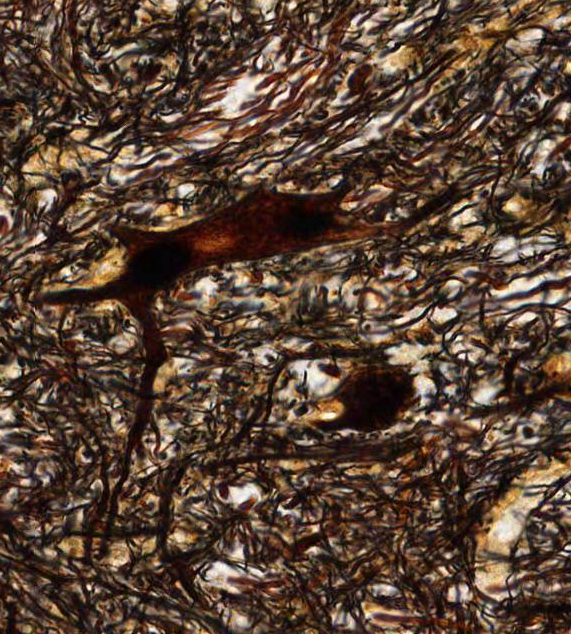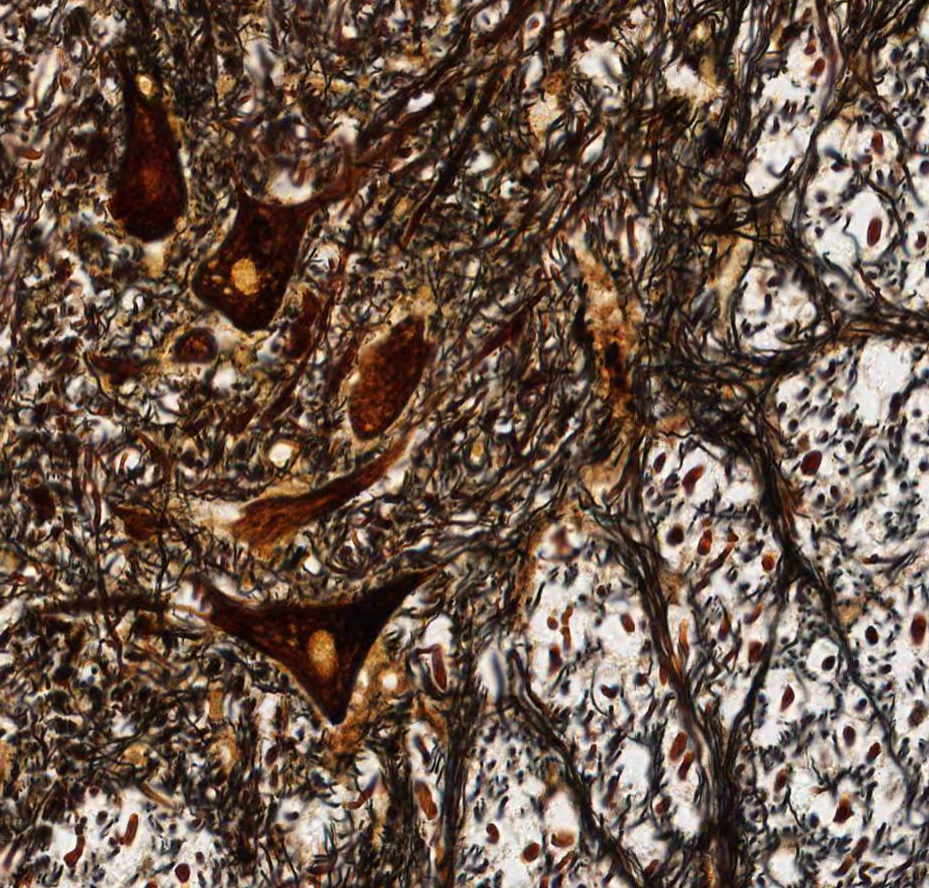Central Nervous System
The central nervous system consists of the brain and spinal cord.
#85 Spinal Cord, Cross section (Nissl stain)
 At low power identify the centrally located butterfly or H-shaped arrangements of the gray matter. Identify the white and gray matter, and the dorsal (posterior) and ventral (anterior) horns of the gray matter. How is the structure of the dorsal side of the spinal cord different from the ventral side?
At low power identify the centrally located butterfly or H-shaped arrangements of the gray matter. Identify the white and gray matter, and the dorsal (posterior) and ventral (anterior) horns of the gray matter. How is the structure of the dorsal side of the spinal cord different from the ventral side?
With medium magnification, identify the cell bodies of the large motor neurons in the anterior horn of the gray matter. Identify the basophilic Nissl substance. To what structures at the electron microscopic level do the Nissl bodies correspond?
 Within the white matter, note the nuclei of glial cells (mostly oligodendroglia) and the cross sections of axons (unstained). The clear space surrounding each axon is occupied in life by the myelin sheath.
Within the white matter, note the nuclei of glial cells (mostly oligodendroglia) and the cross sections of axons (unstained). The clear space surrounding each axon is occupied in life by the myelin sheath.
Note the meninges surrounding the spinal cord. What are the three layers of meninges? Is there anything inside the central canal?
#84 Spinal Cord, Cross Section (Cajal's silver)
At low power identify the centrally located butterfly-shaped arrangement of the gray matter. Within the gray matter, locate the cell bodies of neurons and the associated dendrites and axons. Surrounding the gray matter is the paler staining white matter and the supporting cells (oligodendroglia and others). In the gray matter, note the size and shape of the cell body of the neurons, particularly those in the anterior (ventral) horn.



